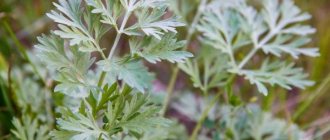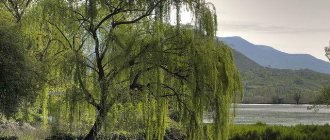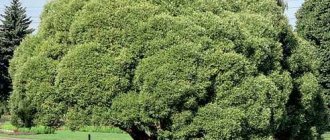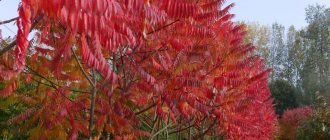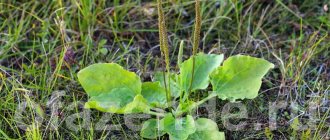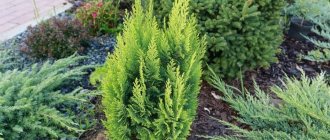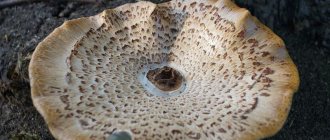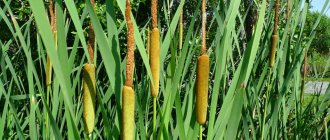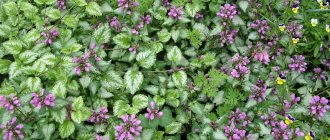Almost all types of wormwood have medicinal properties. They are all different in their chemical composition, which is why they are used differently. In this article we will describe medicinal wormwood, what it is, its main constituent substances, beneficial properties and, most importantly, secret methods of use.
Wormwood is a perennial shrub native to Southern Europe, the Eastern Mediterranean and Asia Minor. Although it is grown in other countries, for example, in Russia it can be found in the European part.
The plant belongs to the genus Artemisia and the Asteraceae family. Another well-known name for medicinal wormwood is God's tree or abrotan. Latin name: Artemisia abrotanum. Its English name Southernwood literally translates to shrubby wormwood, which grows in the south.
The genus name Artemisia comes from the Greek word “abros,” which means “delicate” and refers to Artemis, the ancient Greek goddess of chastity. In mythology, she was also known as Diana, the goddess of the hunt, the mother of all creatures and the goddess of herbalists.
The final word in the plant's Latin name, "abrotanum", is not related to the Latin "aper boar", as some have suggested. It was borrowed from the Greek word "habrotonon" [ἁβρότονον].
What does medicinal wormwood look like?
Anyone who has never seen wormwood may well be mistaken, because to some extent all types of wormwood are a little similar. But this is only at first glance.
Medicinal wormwood is a very aromatic woody perennial plant growing up to 1 - 1.5 m in height. In appearance it resembles a bush, because it spreads about 0.5 - 0.6 m in diameter.
The plant needs full or partial sun and sufficient moisture, although it can withstand minor drought. It grows well in most types of soil, preferring well-drained soil.
Medicinal wormwood has woody branched stems. The leaves are small, gray-green, narrow and pinnate. Young leaves are slightly hairy and feel like silk, but when they mature they become almost smooth.
The flower heads are very small, but there are quite a lot of them. They grow from long, thin, drooping racemes. The inflorescences themselves are yellow. They usually bloom from August to September.
Few people know that this herb rarely blooms, so it is better to propagate it by root division or cuttings. Medicinal wormwood also has small, inconspicuous fruits that resemble a brown nut.
In herbal medicine, only the leaves of the plant are used, whether fresh or dried. Their bitter lemon aroma is great for brewing herbal tea. But you just need to carefully select the dose, because in small doses it is pleasant, but in large doses the tea is too bitter.
Wormwood leaves are also used as an insect repellent. Branches are often hung in closets to repel moths. But be careful - the branches contain a little yellow dye, which sticks well to the wool. Try to hang wormwood branches so that they do not come into direct contact with clothing.
Planting and caring for God's tree
What do you need to know when planting a plant in a garden or vegetable garden? Wormwood is a very unpretentious herb. There are few places where it does not take root.
How to plant God's tree correctly? Planting is carried out on a sunny plot of land. The best soil is light and nutritious; if desired, you can fertilize poor soil.
Growing does not take much time - the shrub reproduces quickly, does not require special care, and can be used as a living fence.
Growing Austrian bush requires constant watering of the soil. Requires pruning of lower branches. Blooms from July to September. The good thing about growing wormwood is that you can prepare and dry its leaves yourself for further use.
Medicinal wormwood in folk medicine
It is a strongly aromatic bitter herb that improves digestion and liver function by increasing secretions in the stomach and intestines. It also stimulates the uterus and can even induce menstruation.
Medicinal wormwood is used in folk medicine to reduce fever, relieve spasms, and remove intestinal worms. The leaves and young flowering shoots are anthelmintic, antiseptic, choleretic, analgesic, stomachic and tonic.
This herb is one of the plants that stimulates blood flow in the pelvic area and uterus, thereby inducing menstruation. This is the main use of this herb.
In some cases, it is even given to young children to expel parasitic worms. A paste of the leaves is applied externally to small wounds to stop bleeding and speed up healing.
The herb is sometimes added to aromatic baths and used as a poultice to treat certain skin conditions. Fresh leaves are rubbed on the skin to protect against mosquitoes.
There is evidence that wormwood was previously known for the treatment of cramps, urinary disorders, menstrual pain, cough, and also as an antidote to snake bites and other poisonous animals (spiders and scorpions).
It is believed that wormwood oil promotes beard and hair growth. Wormwood leaves used to be placed in pillows to make it easier to fall asleep and overcome insomnia. They were also soaked in warm water, often combined with nettle, rosemary or sage, and then rubbed into the skin to prevent the spread of infection.
Medicinal wormwood also has a positive effect on the digestive system, increasing the production of digestive juices. It has even been used for diarrhea, urinary tract infections, bronchitis and other upper respiratory tract infections.
Medicinal wormwood in cooking
Abrotane is more than a little old-fashioned culinary herb. Today it is practically no longer used in cooking. Given its rather noticeable unpleasant odor, reminiscent of lemon and strong bitterness, it is very difficult to find a reasonable application. And besides, you need to carefully select a safe dosage.
Medicinal wormwood is mainly suitable for flavoring fatty meats (pork, duck, goose, lamb) and all thanks to its bitter components that improve digestion and stimulate appetite. On the other hand, the leaves can be added to veal and turkey, enhancing the flavor of the dish.
Young shoots have a bitter, lemony taste and are added in small quantities to pies, salads and even vinegar. The best herbal tea is made from the fresh leaves and flowers of the plant.
In Italy, wormwood is a well-known culinary herb; here it is prepared as a leaf vegetable and added to a variety of salads. In Southern Europe, young bitter shoots and leaves are used in brewing.
Tips for seedlings
Experts call cuttings (dividing the bush) the best method of propagating wormwood “God’s tree”. Biennial and mature shoots are suitable here. Before planting, they are placed in water for ten days to form a root system. Cuttings 10-15 cm are introduced into moist soil. Between seedlings, 1.5 meters of space should be left for freedom of growth. Before planting, the soil is generously fertilized and watered with warm water. Further, irrigation is necessary during the first two weeks.
In specialized stores you can purchase the seed of God's tree. Planting material is placed in small cups with peat inside and removed to a warm, well-lit place before the root system grows. After a month of care, the seedlings are ready to be introduced into open soil.
Medicinal wormwood propagates by layering. To do this, select a shoot 25-30 cm long and remove all the foliage from it. An incision is made on the shoot, and the wound is treated with a substance that stimulates growth. Place sphagnum moss on top and press firmly. Below the cut site, attach a black film with peat and tighten both ends with electrical tape. When the root system begins to break through the wound, the cuttings are cut off and planted in a pot.
Interesting Facts
Previously, in Poland, medicinal wormwood was placed in the bride's shoes to protect her from any evil intentions. This herb is still used as incense in many Catholic churches.
Due to its refreshing aroma, abrotane is grown indoors in pots. The plant's shoots can be burned in the fireplace to remove cooking odors from the home. Sometimes the tree of God is trimmed straight and grown in the garden as a low hedge. Its dried leaves and stems are hung in cabinets to protect against moths.
Fresh abrotane is also rubbed onto the skin to repel insects. The essential oil from the leaves is used similarly, as its strong aroma repels mosquitoes, moths and other insects. This herb was often placed in bouquets and placed in the kitchen to keep flies at bay.
The oil from the leaves and flowering shoots is used in perfumery to add certain subtle nuances. You can get yellow dye from the branches. An infusion of the plant is used as a hair tonic or conditioner.
Bush propagation
Cuttings
From May to June, cut a shoot branch 10 cm long and stick it in a moistened flowerbed (but if it’s cold, you can also put it in an indoor pot). Water occasionally.
To avoid damaging the nascent roots, the cuttings should not be dug up for inspection. You can tell that roots have appeared by looking at the new leaves on the cuttings.
Dividing the bush
In April, when transplanting, the bush can be divided. But even if you don’t plan to move it to a new place yet, the tree of God can be dug up and halved, after which one section can simply be returned to its old place.
When dividing with a bush, you don’t have to stand on ceremony: feel free to shake it, ridding the roots of the soil so that it is convenient to work with them.
There can be three or more divisions. The main thing is that a large root falls on each one.
Layerings
From the middle to the end of May, select a shoot from 20 to 30 cm. Clean all the leaves from it, cut the bark in one place into a ring, treat this wound with “Kornevin” or another similar product. Now wrap this place with damp moss, which needs to be lightly wrapped with film. Once you see the roots, you can cut off the branch and plant it in a permanent place of residence.
Growing God's tree in seedlings
As I already said, in open ground conditions, the seeds of the tree of God do not have time to ripen. Therefore, you can only use purchased seed. But there is no need to worry that they will send you a late one: the seeds of the tree of God remain tenacious even after 50-70 years of storage!
Seeds are sown in small pots. They are kept in the house, on the most illuminated windowsill. When the seedlings grow to 10-20 cm, they can be transferred to open ground.
What substances does wormwood contain?
The leaves contain up to 1.4% essential oil, the main components of which are 1,8 cineole, tannins, flavonoids, bitter substances, phenolic acids, folic and salicylic acids, abrotanin and coumarin.
There are chemotypes in the oil of which thujone (up to 70%) or 1,8-cineole (up to 60%) predominate. Minor components are fenchene, sabinene, α-caryophyllene and β-caryophyllene. In addition, heterocyclic sesquiterpenoids davanol, davanone and hydroxydavanone can be found in wormwood oil.
Recently, thujone in essential oils has been viewed as a toxic substance. That is why such oils cannot be used for food purposes or even aromatherapy.
Volatile compounds include the following: 4-methyl-pent-2-enolide, lavender lactone, cis-arbusculone, trans-arbusculone, 1-terpineol, cis-β-terpineol, estragole, trans-piperitol, nordavanone, piperitone, davanone ester , davan ester, arteduglasium oxide A, C, D, B, cis-davanone, phytol isomer (Source).
Although God's Tree contains bitter sesquiterpene lactones, it is still less bitter than its close relative, wormwood.
Benefits of medicinal wormwood
Despite its rich history of use, God's Tree has fallen out of favor as a medicinal plant, and modern herbalists prefer to use wormwood, known medicinally as Artemisia absinthium.
Today, abrotane can still be used to treat a wide range of medical complaints. The plant's therapeutic benefits owe much to its chemical composition.
1) Women's health
Wormwood has traditionally been used to treat a number of health problems in women, especially menstrual discomfort.
Many women are familiar with the painful symptoms that accompany menstruation, including cramping and painful urination.
In folk medicine, abrotane helps women get rid of menstrual cramps and painful urination. This herb also regulates periods in women who often experience irregular menstruation.
2) Takes care of the skin
God's Tree contains natural antiseptic and antimicrobial agents that support overall skin health and are also effective in treating some common skin conditions.
Herbalists often prescribe poultices to speed up the healing of minor wounds, cuts, bites and abrasions, especially if they are on the scalp.
Thanks to its antibacterial and antiseptic properties, wormwood kills acne-causing bacteria and also prevents the spread of bacteria and infections.
The anti-inflammatory properties of abrotane make it an excellent natural remedy for treating a wide range of inflammatory skin conditions such as psoriasis, eczema and rosacea.
Some studies have shown that topical application of Artmesia abrotanum reverses skin damage from long-term sun exposure.
3) Improves sleep
If you suffer from insomnia, you have probably already tried many medications for insomnia. Having trouble falling asleep can be very draining, both physically and emotionally.
Poor quality or insufficient quantity of sleep can cause you to feel tired during the day and be unable to concentrate on work or household chores. Over time, insomnia increases the risk of various diseases, including heart disease and high blood pressure.
Luckily, there are many natural herbs that are great for relaxing, helping you fall asleep, and generally improving your quality of sleep. Medicinal wormwood is one of these herbs.
According to traditional use, abrotane is an effective remedy in the treatment of insomnia. People usually drink tea from the leaves of the plant, although there is evidence that people used to put a few crushed leaves in their pillow before bed, which also helped them fall asleep.
4) Increases appetite
Tea made from the leaves of God's Tree is traditionally prescribed by herbalists for digestive problems, including dyspepsia (indigestion) and to increase appetite. Medicinal wormwood is perfect for people who have suffered serious illnesses and who are struggling to gain weight again.
Tea from this plant is believed to increase bile production and improve food digestion.
5) Removes parasites
A decoction of the leaves is drunk to remove various intestinal parasites from the body, including pinworms. It should be noted that there is no verified scientific evidence supporting this use of the herb. Therefore, if you suffer from intestinal parasites, you should first consult your doctor.
6) Antifungal activity
Several studies have examined the antimicrobial properties of God's tree. In 2014, data was published that Artemisia abrotanum oil has effective antifungal activity against Candida albicans.
As a result, the researchers concluded that abrotane oil should be used for the further development of new drugs against candidiasis.
7) Antidote
Medicinal wormwood has been known since ancient times. One of its most famous uses is to treat bites from snakes and other venomous animals. To do this, the leaves were usually ground into a paste and applied to the bite to speed up its healing.
 Insect repellent
Insect repellent
Medicinal wormwood has a very strong and penetrating odor, somewhat similar to the smell of lemon. Therefore, the leaves and stems of the plant were often used to repel insects (mosquitoes, moths, flies).
We have already written about how grass was hung in closets to repel moths, and leaves were rubbed on the skin to protect against mosquitoes. Plant stems were also placed in bouquets of flowers to drive away flies. If ants appeared in the house, the grass next to the house was burned to deter their entry into the house.
Let's summarize
- The tree of God is called tree wormwood, which is both an ornamental and medicinal plant.
- Wormwood should be planted in a sunny area, protected from wind and drafts. The soil can be anything, only highly acidic and sandy soil will not work.
- There is almost no need to care for the plant, except perhaps water it immediately after planting (and later, in the heat), and even trim it so that the bush looks neat.
- This crop reproduces mainly vegetatively. The tree of God can also be grown from seeds, but it is worth buying them from abroad (packaged ones are also considered in our country). On street bushes, seeds also form, but do not have time to ripen.
You need to use wormwood carefully! The author of this video tells how, trying to cure himself with the help of this herb (so harmless at first glance), he ruined his stomach. Before undertaking treatment, it is worth familiarizing yourself with the history of this person - this way you will know what not to do:
In what doses is medicinal wormwood safe?
There is insufficient information on the safe dosage of abrotane for therapeutic purposes. Before consuming this herb, be sure to consult an experienced herbalist.
The usual dosage of medicinal wormwood is up to 4 g of dried herb, which should be divided into three times a day.
You can also make tea from the dried leaves of the plant and sweeten it with honey. It perfectly calms, improves sleep and improves digestion.
Precautionary measures
Like other members of the same genus, wormwood (Artemisia abronatum) has a stimulating effect on the uterus in women. Consumption of large doses of the plant leads to miscarriage, so it is contraindicated during pregnancy.
Breastfeeding mothers should also be careful and under no circumstances ingest tinctures, decoctions or tea from wormwood. Children under 12 years old should not use this plant either.
Although topical use is considered generally safe, some people suffer from allergic reactions to plants in the Asteraceae family.
Wormwood can also cause skin rashes and other allergic reactions in sensitive people. If you experience any reactions from topical use of the plant, stop using it immediately.
Secret uses of abrotane
1) Night cosmetic cream
Gather a handful of plantain, tree of God, black currant and angelica leaves. Place everything in a saucepan and add a cup of almond or olive oil. Simmer for 30 minutes, then strain the oil. Add 30 g of white beeswax to the heated oil. Cool slightly and pour into jars before the mixture completely hardens.
This cream is perfect not only for moisturizing the skin, but also for treating small cuts, scrapes and preventing the spread of skin infections.
2) Relaxing bath
Boil a handful of rosemary leaves, lemon balm, bergamot, hyssop, thyme, wormwood together with a handful of chamomile flowers for 10 minutes. You should get approximately 400 - 450 g of herbs per 1 liter of water.
Strain and when the liquid has cooled, add 1/5 of a bottle of alcohol or whiskey. Thanks to this, the mixture will be stored for 2 months. Every time you take a warm bath, add a little of this mixture to tone your body, cleanse your skin of impurities and relax your muscles.
3) Floor cleaner
Boil a large bouquet of lavender, wormwood and tansy in 7 - 10 liters of water for 10 - 15 minutes. Add ¼ cup vinegar and then refrigerate. Strain the mixture and pour it into a bucket. Wash your floors with this mixture to get a refreshing, pleasant scent for a long time.
4) Cake “Southern Forest”
- 2 cups wheat flour;
- baking powder;
- 1 cup sugar;
- 4 tsp. medicinal wormwood leaves, finely chopped;
- 4 eggs;
- stick of butter, melted and cooled.
Grease and flour a 20cm baking dish. Sift the flour into a large bowl. Add baking powder, sugar and abrotan leaves.
In a separate bowl, lightly beat the eggs, then add the cooled butter. Stir the butter mixture into the flour mixture. Pour the batter into the prepared pan.
Bake in a preheated oven at 180ºC for 30 minutes to 1 hour or until a toothpick inserted into the center comes out clean.
Cool the cake, then remove the sides of the pan. Serve with lightly sweetened whipped cream.
Recommendations for cultivation and care
The dill tree takes root well in any soil and copes with frosty winters. To improve the appearance of the plant, some rules are followed.
- A suitable location would be the sunny side of the site, since abrotan needs warmth and bright lighting.
- Protect the plant from strong winds by building a stopping barrier in the area or placing the lady's tree between other shrubs.
- Before planting medicinal wormwood in the ground, the soil is saturated with organic fertilizers and minerals, and then watered abundantly.
- Abrotane does not require moving and grows evenly over 10 years. It gets along among perennials, but does not tolerate too acidic soil.
Wormwood "God's tree" is completely unpretentious in care, but it requires infrequent watering. The plant requires liquid (three liters of water) once every half month. To prevent the appearance of harmful aphids, the bush is sprayed with a solution of green soap. Regular weeding of the soil helps get rid of weeds. This process helps the roots of medicinal abrotane absorb more minerals.
It is recommended to feed the decorative wormwood shrub with a complex of fertilizers (phosphorus, ash, humus, peat). Mulching helps maintain and protect the soil cover around the lady's tree. To give the shrub an acceptable appearance, gardeners regularly trim old and diseased branches. Pruning is recommended in early spring, when severe frosts are not able to harm the bush.
Dill tree copes with cold weather (-25 degrees). Young shoots may become stiff, but with the arrival of spring they restore their former flexibility. The seedlings are put away in a cool place for the winter or the tops of the branches are cut off in order to help the shrub cope with the upcoming cold weather.
The decorative properties of the tree are highly valued by florist lovers. Using the technique of moderate trimming of the elegant crown, gardeners create compact bushes that fit perfectly into the overall landscape of the decorated garden. Carefully trimmed shoots subsequently grow correctly and evenly. The memorable gray-green shade of the crown of decorative wormwood differs from the background of neighboring perennials of various formats.
